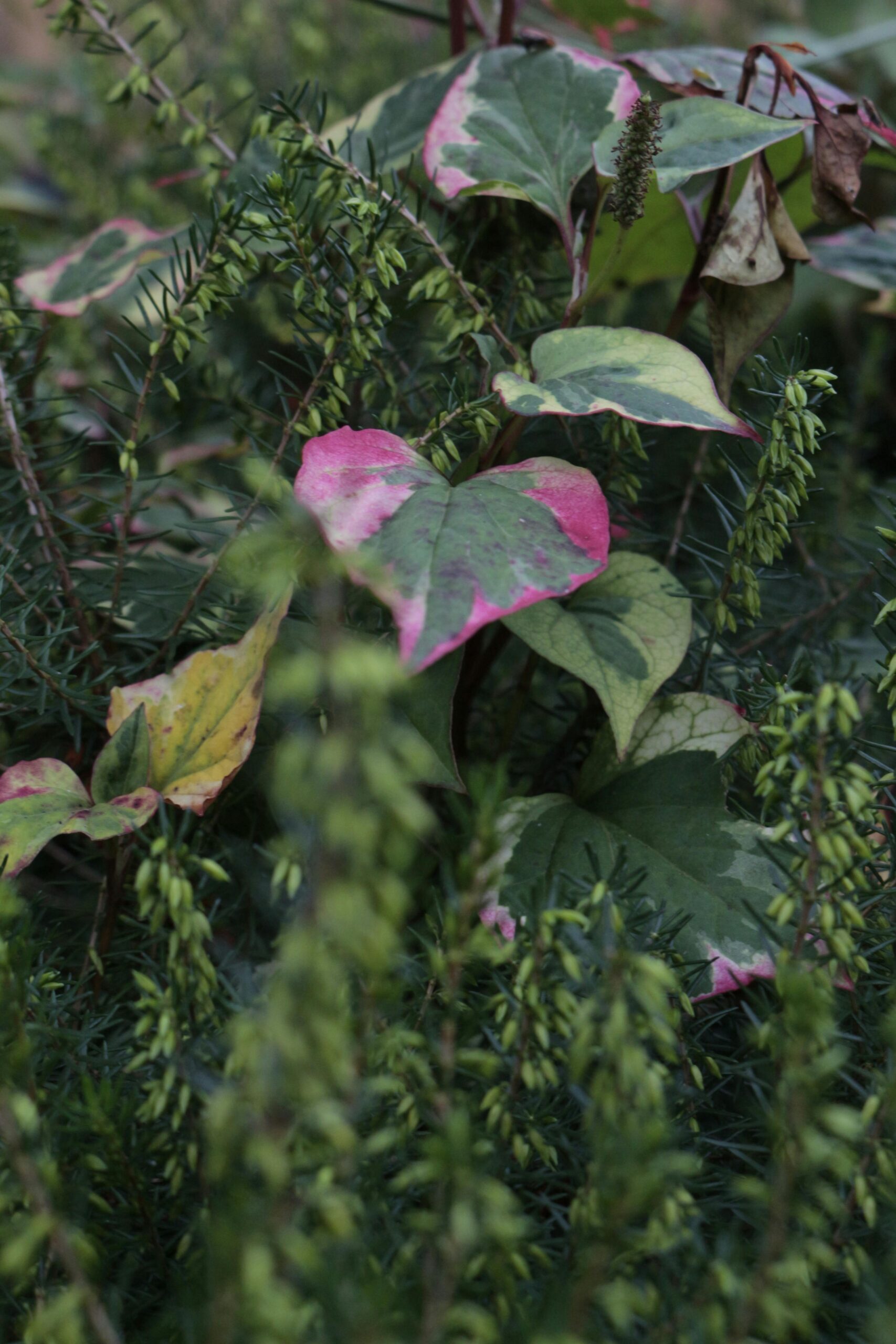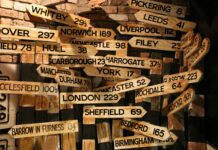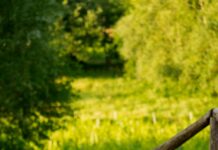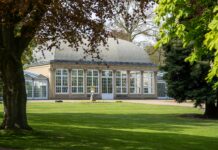Discover the enchanting world of Sheffield Park Gardens, a true hidden gem nestled in the heart of East Sussex. Have you ever wondered what makes this historic garden so captivating throughout the seasons? Famous for its stunning springtime blooms and breathtaking autumn colours, Sheffield Park Gardens offer visitors an unforgettable experience that combines natural beauty with rich heritage. Whether you’re a nature enthusiast or simply looking for a peaceful retreat, this spectacular landscape is a must-visit destination. But what secrets lies within its winding pathways and tranquil lakes? Explore the diverse collection of rare plants and ancient trees that make Sheffield Park Gardens one of the most cherished botanical gardens in the UK. The garden’s unique design by Capability Brown adds an extra layer of charm that garden lovers around the world admire. Plus, with special events and guided tours available throughout the year, there’s always something new to discover. Don’t miss the chance to immerse yourself in the serene atmosphere and capture the perfect photo moments. Curious about the best times to visit or tips for families? Keep reading to unlock insider information on how to make the most of your Sheffield Park Gardens adventure!
Exploring Sheffield Park Gardens: Top 7 Must-See Hidden Gems and Secret Spots
Sheffield Park Gardens: A Hidden Gem You Probably Haven’t Visited Yet
If you ever find yourself in East Sussex, you might want to take a detour to Sheffield Park Gardens, which is one of those places that look simple on the outside but is actually packed full of surprises. I mean, not really sure why this matters, but the gardens have been around since the 18th century, and it’s kind of mad how they’ve kept evolving over the years. The whole place is like a living painting, except with fewer frames and more mud.
A Little History You Probably Didn’t Know
Sheffield Park Gardens was originally created in the 1700s, but it didn’t really get famous until the 19th century when a bloke named Capability Brown (yes, that’s his real name!) decided to have a go at redesigning the landscape. The guy was basically the OG of garden design, but if you ask me, some parts of the garden look like he just threw a handful of trees in random spots and hoped for the best. Still, the end result is stunning enough to make you forget that you’re actually just wandering around a giant patch of grass and flowers.
| Year | Event | Notes |
|---|---|---|
| 1700s | Gardens originally created | Small private estate |
| Late 1700s | Capability Brown redesigns the park | Introduced lakes and rolling lawns |
| 20th C | Gardens opened to public | Became a tourist attraction |
The Gardens Themselves: What To Expect
When you hear the words Sheffield Park Gardens, you probably picture a bunch of posh flower beds and people in tweed jackets pretending to know what a rhododendron is. And yeah, there’s a bit of that, but there’s also way more going on. The gardens actually cover over 90 acres, with lakes, woodland, and wildflower meadows. You can spend hours just wandering around and still not see everything, which is great if you like getting lost (or if you’re as directionally challenged as me).
Here’s a quick list of things you should definitely see when you visit:
- The Rhododendron Dell: Probably the most famous part, especially in spring when it’s an explosion of colours.
- The Lakes: Perfect spot for a picnic, unless the swans decide you’re lunch.
- The Woodland Walks: Ideal for those who want to pretend they’re in a fairytale or lost in an episode of a nature documentary.
- The Alpine House: A bit of a hidden gem, with some weird and wonderful plants that you won’t find anywhere else.
Maybe it’s just me, but I feel like the best time to visit Sheffield Park Gardens in spring. The flowers are blooming, the birds are chirping, and the whole place just feels alive. It’s like nature’s own rave, minus the loud music and questionable dance moves.
Practical Info If You’re Thinking Of Going
Planning a trip to Sheffield Park Gardens isn’t exactly rocket science, but a few tips wouldn’t hurt, right? Here’s some stuff I wish I knew before my first visit:
| Tip | Details |
|---|---|
| Best time to visit | Late April to early June for rhododendron blooms |
| Entry fee | About £10 for adults, kids usually free |
| Parking | Plenty of spaces but can get busy on weekends |
| Food & Drink | Café on site but bring snacks if you’re hungry |
| Accessibility | Some uneven paths, so not great for wheelchairs |
One thing to keep in mind: the weather in England is about as predictable as a soap opera plot, so bring a brolly even if the sun is shining in the morning. Trust me, you don’t want to be caught in a downpour while admiring the azaleas.
Why People Keep Coming Back
So, what’s the deal with people flocking to Sheffield Park Gardens year after year? Honestly, part of it is the sheer variety. From lakes to flowers, from calm spots for reading to areas perfect for kids to run wild, it’s like a mini escape from everyday life. Plus, there’s something satisfying about seeing something you planted (or just admired, let’s be honest) grow and change with the seasons.
Also, if you’re into photography, this place is a bit of a jackpot. The light, the colours, the reflections in the water – it’s like the gardens have been set up just for Instagrammers. Not that I’m saying you should pose like a model next to a rhododendron, but hey, no judgements here.
Quick Comparison: Sheffield Park Gardens vs Other Local Gardens
| Feature | Sheffield
How Sheffield Park Gardens Showcases Stunning Seasonal Landscapes Year-Round
Sheffield Park Gardens: A Quirky Look Into A British Treasure
If you ever find yourself wandering around East Sussex, you might wanna check out Sheffield Park Gardens, though I’m not really sure why this matters, but it’s supposed to be one of those hidden gems that you wouldn’t expect in the middle of nowhere. The gardens is quite vast and colourful, with every corner seeming like it’s been plucked from a fairytale, or at least it tries to be. The place is well known for its sprawling landscape, featuring lakes, woodlands and lots of flowers that blooms almost all year round, well, mostly in spring and summer, but hey, nature don’t always play by the rules.
The History Bit (Because You Probably Care)
Originally, Sheffield Park Gardens was designed in the 18th century by Capability Brown. No, that’s not a superhero, but a landscape architect who was famous for making gardens look natural even though they were anything but. The gardens was part of a private estate before opening to the public in the 1950s, so you can imagine the kind of posh folks that used to stroll around here. Today, it is managed by the National Trust, which means they tries to keep it looking tip-top for visitors, though sometimes it feels more like a giant outdoor museum than a lively garden.
What Makes Sheffield Park Gardens So Special?
Honestly, its mix of water features, rare trees, and those colourful azaleas and rhododendrons kinda steal the show. But if you come in autumn, you’ll be treated with a riot of colours that the garden throws up like a painter gone mad. It’s not just about the flowers and plants though; the garden also have some quirky little bridges and walking trails that invite you to explore at your own pace. Maybe it’s just me, but I feel like these paths are perfect for getting lost in thought or maybe just lost in general.
Here’s a quick look at the main attractions you shouldn’t miss:
| Feature | Description | Best Time to Visit |
|---|---|---|
| The Lakes | Several interconnected lakes with reflections | Spring and Autumn |
| Rhododendron Walk | A colourful walk with vibrant flowers | Late Spring |
| The Woodland Trails | Shady paths lined with ancient trees | All year round |
| The Italian Garden | Formal garden area with fountains | Summer |
If you’re planning to visit, keep in mind that the garden is pretty big, so wear comfy shoes or you’ll regret it by the end of the day. And don’t forget to bring your camera, because there’s a ton of photogenic spots around.
Tips For Visiting Sheffield Park Gardens
- Arrive early to avoid the crowds, especially in summer weekends.
- Bring a picnic; their café is nice but can be a bit pricey.
- Check the National Trust website for any special events or guided tours.
- If you into birdwatching, bring binoculars because the garden hosts a variety of birds.
Not Really Sure Why This Matters, But…
The garden also have a little train that runs around certain parts of the park. It’s a bit of a novelty and honestly, it seems more for kids, but adults can hop on too if they feel like it. It’s a nice way to get a quick overview of the whole estate without tiring your feet out. Although, I have heard some folks complain that it breaks the natural vibe of the place, but I say, let people have fun.
Wildlife at Sheffield Park Gardens
The gardens not only attract human visitors, but also a bunch of wildlife. You’ll find ducks, swans, and sometimes even herons hanging around the lakes. In the woodland areas, if you’re lucky, you might spot squirrels, woodpeckers, or even a shy fox. Here’s a simple list of animals that commonly seen:
- Ducks and Swans
- Herons
- Squirrels
- Various species of songbirds
- Occasional fox sightings
Maybe it’s just me, but seeing those animals makes the whole garden experience feel more alive, like you’re part of this little ecosystem rather than just a tourist snapping pictures.
Why You Should Visit Sheffield Park Gardens (Even If You’re Not A Garden Person)
Look, I get it. Not everyone is into flowers and plants. Some people see gardens and think, “Yeah, great, a lot of green stuff.” But Sheffield Park Gardens isn’t just a patch of grass with some flowers. It’s a mix of history, art, nature, and even a bit of mystery. The way the lakes are laid out, the bridges, the hidden corners, it almost like the garden is telling you a story. Maybe it’s a story about the people who lived there or the landscapers who designed it, or
Discover the History and Natural Beauty of Sheffield Park Gardens: A Complete Visitor’s Guide
Sheffield Park Gardens: A Hidden Gem Worth The Visit
If you ever find yourself wandering around East Sussex, you might just stumble upon a place called Sheffield Park Gardens. Honestly, I don’t know how it’s not more famous, but it seems like a well-kept secret that only the locals know about. The gardens is a large, historic estate with loads of different plants and trees, all arranged in a way that’s supposed to look natural, but with a touch of charm that you don’t get every day. Maybe it’s just me, but I feel like places like this get overlooked because people are too busy with their phones or whatever.
What makes Sheffield Park Gardens special isn’t just the size, but the history behind it. The gardens was designed in the 18th century by Capability Brown, who was a big name in garden design (though, not really sure why this matters, but it’s often mentioned). The idea was to create a landscape that look like the natural English countryside, but with careful planning to make everything more picturesque. You can explore lakes, rolling lawns, and plenty of woodland paths that twists and turns in surprising ways.
Here’s a quick breakdown of some of the main attractions inside the park:
| Attraction | Description | Best Time To Visit |
|---|---|---|
| The Lakes | Several man-made lakes with ducks and swans | Spring and Summer |
| The Rhododendron Walk | Colourful walk filled with rhododendron bushes | Late Spring to Early Summer |
| Woodland Trails | Shady paths winding through ancient trees | Autumn for the changing leaves |
| The Rock Garden | Unique garden featuring rock formations and alpine plants | Year-round |
If you’re planning to hit up Sheffield Park Gardens, make sure you wear comfy shoes. The paths can be a bit muddy after rain and sometimes you have to climb small hills. Not that I’m complaining, but it’s not really a place for a quick stroll if you’re in a hurry. Also, dogs are allowed but they should be kept on a lead – which is fair enough, considering the wildlife and other visitors.
One thing that’s quite fascinating about the gardens is the variety of plant species you can spot. From flowering shrubs to rare trees, it’s like a mini botanic garden but without the stuffy atmosphere. There’s even a spot where you can see some ancient oaks that probably been standing there for hundreds of years. I mean, if those trees could talk, imagine the stories they’d tell!
A bit about the facilities – don’t expect anything too fancy. There’s a small café where you can grab a tea or a sandwich, but it’s nothing Michelin-starred. Still, it’s nice to sit outside and watch the ducks paddling around the pond while you munch your sarnie. Plus, there’s a gift shop with some quirky souvenirs – ideal if you want to bring home a little memory from your visit.
Here’s a quick checklist if you’re thinking about visiting:
- Bring waterproof jacket (weather in Sussex is unpredictable)
- Pack a picnic if you want to save some money
- Reserve a few hours to really explore the grounds
- Check the garden’s website for any events or closures
- Bring a camera or smartphone for all the photo ops
You might be wondering about access and tickets, so here’s that info in a nutshell:
| Ticket Type | Price (Adult) | Price (Child) | Notes |
|---|---|---|---|
| Standard Entry | £12 | £6 | Entry to gardens and lakes |
| Annual Membership | £40 | N/A | Unlimited visits |
| Group Visits | Contact Parks | Contact Parks | Discounts available |
Not sure if you’re a plant person? No worries. Even if you don’t know a rhododendron from a fern, Sheffield Park Gardens has a vibe that’s relaxing and inspiring. I once went with a mate who was more interested in his phone than flowers, but by the end of the day, even he admitted it was a decent day out. It’s the kind of place that makes you forget your troubles, even if just for a little while.
Oh, and if you’re travelling with kids, there’s a playground near the entrance, so they can burn off some energy before or after your garden wander. It’s always a bonus when places cater for the little ones, because let’s be honest, they can get bored pretty easily.
Before I forget, the best time to visit Sheffield Park Gardens really depends on what you wanna see. Spring is brilliant for flowers blossoming, summer brings lush greenery, and autumn is just magical with the leaves turning all shades of orange and red. Winter? Well, it’s
Why Sheffield Park Gardens Is the Ultimate Destination for Nature Lovers and Garden Enthusiasts
If you ever find yourself wandering around East Sussex, you might wanna swing by Sheffield Park Gardens, a place that’s often touted as a green paradise but honestly, it’s a bit more than just “green”, wouldn’t you say? The gardens is sprawling, and sometimes it feels like you’re stepping into a different world where time kinda slows down. Not really sure why this matters, but it’s one of those spots where even the busiest city folk can pretend they’re not in a rush for a while.
The history behind Sheffield Park Gardens is quite something, though a lot of people don’t know much about it. Originally, it was designed in the 18th century by Capability Brown — yes, the guy who’s like the Shakespeare of garden design. He made the gardens look natural but really it’s all very carefully planned, which is a bit ironic, don’t you think? Anyway, the garden is a fine example of the English landscape style, with lakes, rolling lawns, and plenty of trees that look like they been there forever.
Here’s a quick glance of what you’ll find inside these gardens:
| Feature | Description | Best Time to Visit |
|---|---|---|
| The Lakes | Man-made but looks totally natural, with ducks | Spring to early autumn |
| Rhododendron Walk | Colourful blooms that brighten up the paths | Late April to June |
| Woodland Trails | Shady and peaceful, perfect for a quiet stroll | Year-round |
| Walled Garden | Filled with seasonal flowers and vegetables | Summer |
It’s quite a big area to cover, and if you’re like me, you might get a bit lost — which isn’t a bad thing! Sometimes the best parts of Sheffield Park Gardens are the ones you stumble upon by accident. Maybe it’s just me, but I feel like getting a bit lost in nature is exactly what these places are for.
One of the things that surprises visitors is the variety of plant species. They got everything from azaleas that burst with colour in spring to old oak trees that look like they’ve seen centuries pass by. If you’re a bit of a plant nerd, this place will be right up your street. And if you’re not, well, there’s still plenty of space to sit down with a picnic and watch the world go by.
A quick heads up: the gardens can get a bit muddy after rain, so bring your wellies or some sturdy shoes, otherwise you might end up with a soggy feet and a grumpy mood — trust me on this one. Also, their café serves some decent teas and cakes, nothing fancy but perfect for a quick break between exploring.
Now, if you’re curious about the wildlife – and who isn’t? – you’ll meet plenty of birds, squirrels, and if you’re lucky, the odd deer might pop up. Not really sure why this matters, but spotting a deer in the wild always feels like a little win, like you’re in a nature documentary or something.
Here’s a handy checklist to prepare for your visit to Sheffield Park Gardens:
- Comfortable walking shoes (preferably waterproof)
- A camera or smartphone for photos
- Picnic blanket and snacks (if you wanna eat outdoors)
- A map of the gardens (available at the entrance)
- Binoculars, if you’re into birdwatching
- Weather-appropriate clothing (umbrella or sunhat, depending)
If you’re planning on visiting, try to avoid the weekends when it’s busy as a beehive—crowds kinda spoil the peace, don’t they? Weekdays are quieter and you can take your time to soak in all the beauty without having to dodge selfie sticks.
Sometimes I wonder if the garden’s charm lies in its imperfections. The odd patch of weeds here and there, the slightly overgrown paths, or the ducks that seem to have their own agenda. It adds character, makes the place feel alive, not like some polished tourist trap.
Below is a little breakdown of the gardens’ main plant highlights throughout the year:
| Month | Flowering/Highlight | Notes |
|---|---|---|
| March-April | Bluebells and daffodils | Great for colourful walks |
| May-June | Rhododendrons and azaleas | Peak bloom, very popular |
| July-August | Roses and summer bedding | Walled garden is at its best |
| September | Autumn leaves and berries | Lovely colours, quieter |
| October | Late blooms and fungi | For the adventurous explorer |
And here’s some practical tips if you’re thinking about bringing kids along:
- There’s plenty of space for them to run, but keep an eye near the lakes.
- Some parts are
Uncover Rare Plant Species and Breathtaking Views at Sheffield Park Gardens: Tips for Photographers
Sheffield Park Gardens: A Hidden Gem You Probably Didn’t Know About
If you haven’t been to Sheffield Park Gardens yet, well, you’re missing out big time. This place is like, a proper slice of English countryside magic, but with a fancy twist. Located in East Sussex, these gardens are famous for their stunning landscapes, but not many people actually know what makes them tick. I mean, yeah, you’ll see loads of flowers and trees, but there’s more than meets the eye, or so I heard.
The gardens were created in the 18th century by Capability Brown, who was some kind of landscape wizard or something. He designed it to look natural, but it’s all very carefully planned — funny how that works, eh? You stroll around thinking you’re just enjoying nature, but really you’re walking through a masterpiece crafted by a bloke in a powdered wig. Not really sure why this matters, but it kind of makes you appreciate the place more.
Let’s break down some key features you should definitely check out on your visit to Sheffield Park Gardens:
| Feature | Description | Best Time to Visit |
|---|---|---|
| The Lake | A large, scenic lake surrounded by trees | Spring and Autumn |
| Rhododendron Woods | A forest area filled with colourful rhododendrons | Late Spring to Early Summer |
| The Rock Garden | A quirky collection of rocks and alpine plants | Summer |
| The Rose Garden | Hundreds of roses in various colours | June to July |
I mean, the lake is pretty, I won’t lie, but I found the Rhododendron Woods more impressive because the colours pop out like a kid’s drawing. Maybe it’s just me, but I feel like places that have bursts of colour, especially in nature, are way more exciting than plain green fields. And the smell? Forget about it — it’s like walking through a floral perfume shop, only outside.
Some practical tips if you’re planning a trip to Sheffield Park Gardens:
- Wear comfortable shoes because you’ll be walking a lot. No one wants blisters ruining their day out.
- Don’t forget a camera or your phone, the photo ops are endless. But fair warning, you might end up with hundreds of pictures and no idea which ones to delete.
- If you like picnics, there are several picnic areas, but be ready for the occasional cheeky squirrel trying to steal your sandwich. They’re bold little buggers.
- Check the opening times in advance. They sometimes close for maintenance or events, and you don’t want to make a wasted trip.
Now, onto something a bit quirky — the wildlife at Sheffield Park Gardens. It’s not just about plants here; you’ll see all sorts of birds, insects, and even some cheeky deer if you’re lucky. I once saw a heron standing perfectly still by the lake, like it was posing for a photo or something. I swear it looked at me like it knew I was watching. Creepy or cool? You decide.
Here’s a quick list of some animals you might spot:
- Herons
- Kingfishers
- Squirrels (as mentioned, they’re basically the garden’s unofficial mascots)
- Butterflies
- Occasionally deer
One thing that puzzled me a bit was the sheer size of the gardens. I thought it was just a small park with some flowers, but it turns out it covers about 90 acres. That’s massive! You could probably get lost if you’re not paying attention. And guess what? They have walking trails with different lengths and difficulties, so you can choose how much you want to explore. There’s even a little train sometimes running around the park for those who can’t or don’t want to walk much — handy if you ask me.
If you’re a plant nerd or just someone who wants to learn a bit, there’s plenty of educational stuff going on at Sheffield Park Gardens. They run workshops, guided tours, and events throughout the year. I once joined a guided tour, and the guide was so passionate it was almost infectious — though I wasn’t sure if I was more interested in the plants or in the fact that she had a really cute dog with her. Not that it matters, but it made the tour way more enjoyable.
Here’s a quick summary of what activities you might find:
| Activity | Description | Recommended For |
|---|---|---|
| Guided Tours | Learn about the history and plants | History buffs, Garden lovers |
| Workshops | Hands-on gardening and plant care sessions | Hobbyists, Families |
| Seasonal Events | Flower festivals, Christmas markets, etc. | Everyone |
| Wildlife Watching | Guided walks focusing |
Conclusion
In conclusion, Sheffield Park Gardens stands as a remarkable example of English landscape gardening, beautifully blending historic design with vibrant horticultural displays. From its serene lakes and sweeping lawns to the diverse collection of rare plants and trees, the gardens offer visitors a tranquil escape into nature’s splendour. The careful restoration efforts have preserved the vision of its original creators while enhancing accessibility and educational opportunities for all ages. Whether you are a dedicated gardener, a history enthusiast, or simply seeking a peaceful retreat, Sheffield Park Gardens provides an enriching experience that captivates the senses and inspires a deeper appreciation for the natural world. We encourage you to explore this iconic garden, support its ongoing preservation, and immerse yourself in the seasonal changes that make each visit unique. Plan your trip today and discover why Sheffield Park Gardens remains a treasured gem in the heart of the English countryside.













